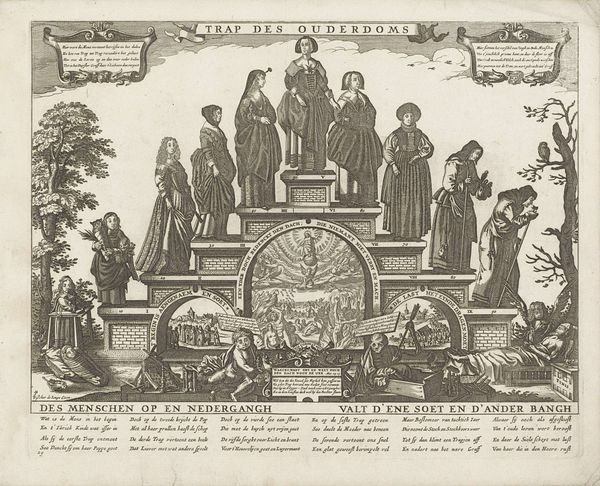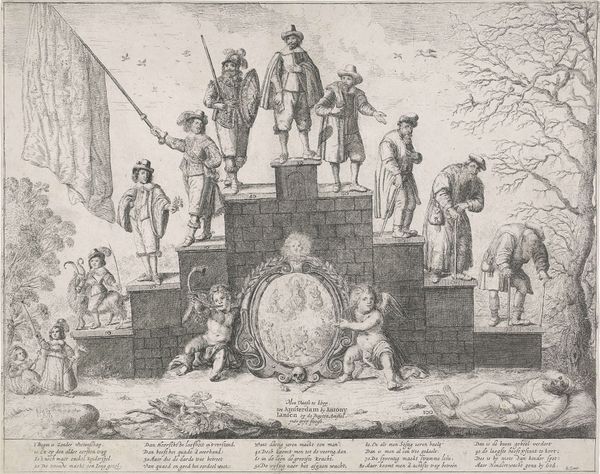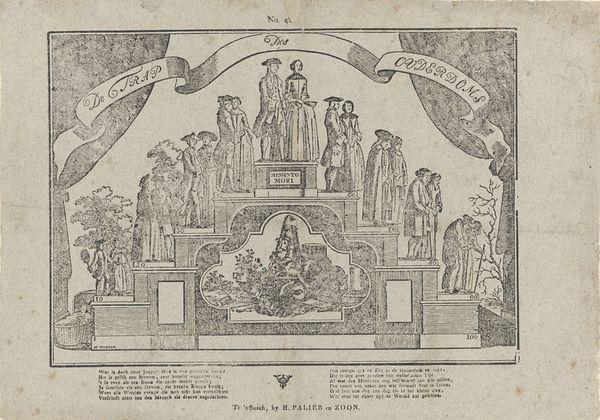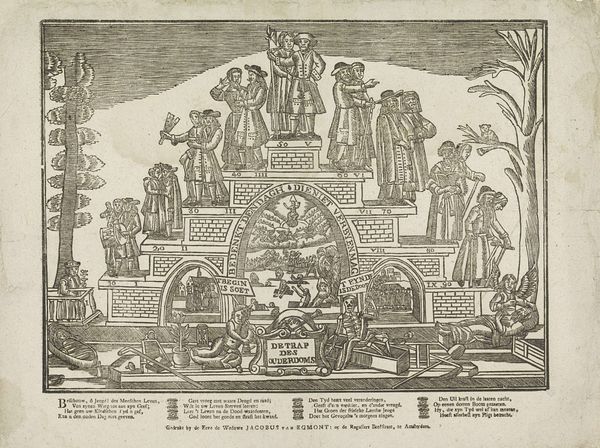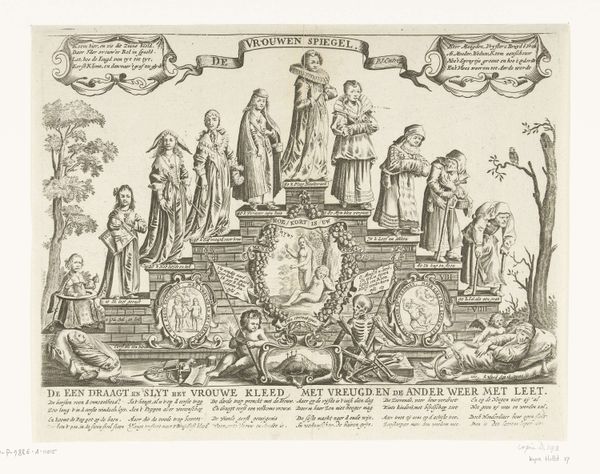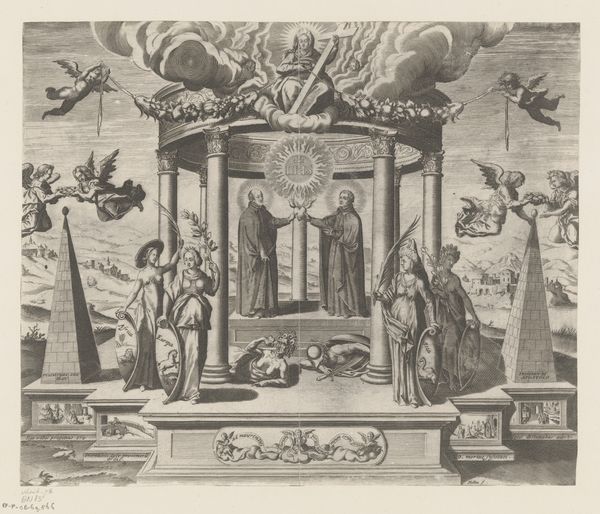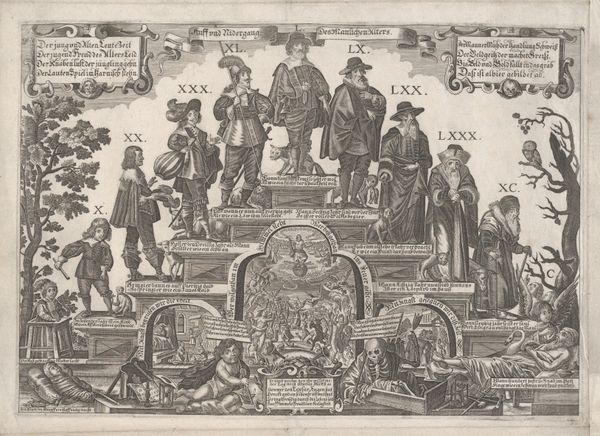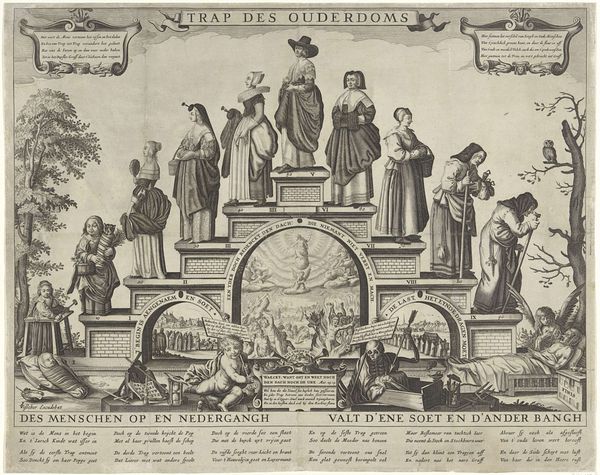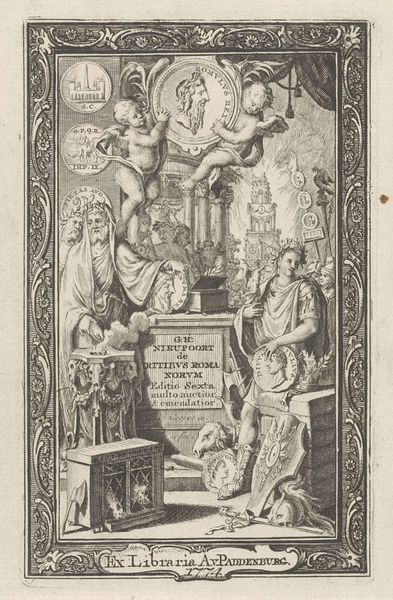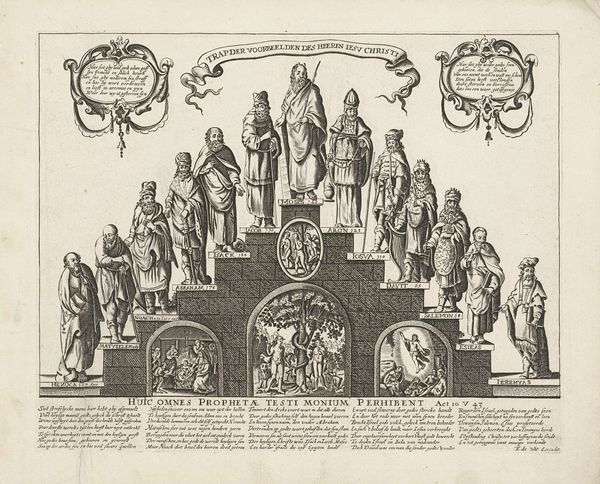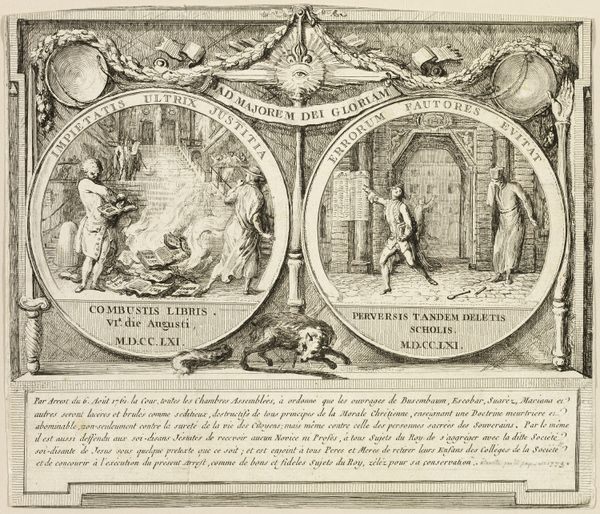
print, engraving
#
allegory
#
baroque
# print
#
figuration
#
form
#
momento-mori
#
line
#
history-painting
#
engraving
Dimensions: height mm, width mm
Copyright: Rijks Museum: Open Domain
Curator: We are now standing in front of “Trap des Ouderdoms,” created sometime between 1612 and 1652 by an anonymous artist. It's an engraving currently held in the Rijksmuseum collection. Editor: It certainly has an intense, almost unnerving atmosphere, doesn’t it? The way life’s stages are rigidly depicted as steps feels so…controlled and predetermined. The use of line, the stark contrast, lends it an almost harsh quality. Curator: Well, think about printmaking in this period. Engraving was a painstaking, highly skilled craft. The process involved meticulous labor, the precise cutting of lines into a metal plate, the controlled application of ink and pressure. The resulting prints were relatively affordable, making complex allegorical images accessible to a wider audience than painted works could reach. This affected the popular consumption of this visual idea. Editor: Precisely! And consider what's being communicated. We see an allegorical stairway of life here, really reflecting the pervasive "memento mori" theme of the period. It presents life's stages, infancy to death. Look how social commentary on wealth, labour, and morality intertwines with anxieties about ageing and mortality! The composition itself visually reinforces power structures and prescribed societal roles at a given point in time. Curator: Absolutely. The figures stand rigidly on their respective steps, each seemingly consumed by their age-specific activity or condition. The print offers a didactic function, serving as a constant reminder of human transience for its contemporary viewers. This kind of precise craftsmanship meets symbolic, cautionary narratives to comment on life. Editor: The very medium reinforces this idea of predetermined paths; it's as though our fates are etched in ink. In this image we find a powerful reflection on mortality that questions individual agency and promotes a distinct set of societal values. It leaves me wondering about whose norms and beliefs are being propagated through mass reproducibility? Curator: Indeed, engaging with “Trap des Ouderdoms” challenges us to contemplate art-making techniques, social influences, and their effect on society and personal existence. Editor: I agree; confronting themes such as ageing, labor, social structures and the limitations they placed on individual lived experience is something this artwork instills in us.
Comments
No comments
Be the first to comment and join the conversation on the ultimate creative platform.
